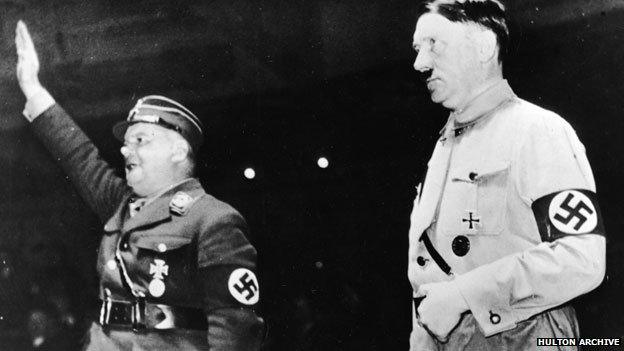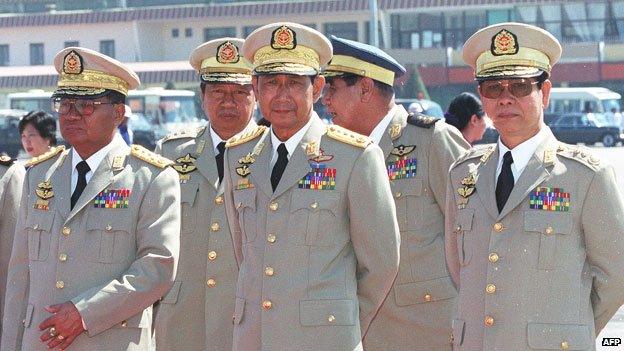Five infamous purges
- Published
North Korea has shocked the world by purging and executing one of its most powerful figures, Chang Song-thaek, who was uncle of leader Kim Jong-un.
The North's leader is following in the footsteps of some of the world's most infamous rulers. Here are five of the most notorious political purges of the last century.

Hitler, Germany, 1934

Ernst Roehm was Hitler's right-hand man before his purge
Hitler used a combination of the ballot box and bullying to gain power in Germany in 1933.
The Sturmabteilung (SA), otherwise known as the "brownshirts", acted as the paramilitary wing of the Nazi Party. Under charismatic leader Ernst Roehm, they beat up and intimidated potential opponents during the 1920s and early 1930s. However, by 1934 they had become too powerful.
Between 30 June and 2 July, Roehm and dozens of other SA leaders were shot dead. The incident became known as the Night of the Long Knives. Although the SA continued to exist, the purge had hobbled it.

Stalin, Soviet Union, 1934-1939

Before the purge, Trotsky could be seen on the right of this picture as revolutionary leader Vladimir Lenin's close aide...

...afterwards, Trotsky is literally airbrushed out of history
Stalin used the killing of his right-hand man, Sergei Kirov, as a pretext for launching a ferocious purge of the leadership. Many historians believe Stalin had ordered Kirov's assassination to give him the excuse he needed.
Dozens of party leaders were subsequently exiled or killed, often after show trials where they were accused of being in league with Leon Trotsky, Stalin's rival for the leadership who fled in 1929. Relatives, friends and even possible sympathisers of anyone labelled a traitor were brutally despatched.
Trotsky was murdered, presumably on Stalin's orders, in Mexico in 1940.

Saddam Hussein, Iraq, 1979
John Simpson looks at footage of the moment Saddam Hussein purged members of the Baath Party
When Saddam came to power, he carried out a very public purge of more than 60 senior members of the ruling Baath Party, the organisation that had put him in his post as president.
Black-and-white video footage shows Saddam smoking a cigar as various politicians are denounced as traitors. They are led away, until only about half of the members are left.
Many were subsequently tried and executed for treason.

Deng Xiaoping, 1980, China
The BBC's Philip Short reports on the trial of China's Gang of Four
After Mao Zedong's death in 1976, a bitter struggle for power broke out at the top of the Communist Party. By 1978 Mao's chosen successor Hua Guofeng had been usurped, external by Deng Xiaoping, a reformer who had earlier been frozen out by Mao.
In 1980, some of Mao's most extreme allies were put on trial. It was a political show trial accompanied by a massive propaganda campaign denouncing the so-called Gang of Four. It was designed to cement the power of the new leadership under Deng.
All four were found guilty and eventually sentenced to life in prison.

Than Shwe, Burma/Myanmar, 2004

Than Shwe (L) became fearful of the power of his prime minister, Khin Nyunt (R)
Until 2010, one man dominated the politics Burma (also known as Myanmar): Than Shwe, a self-styled senior general who reigned imperiously for more than two decades.
For a brief time, however, a younger more charismatic general, Khin Nyunt, threatened to upset the power balance. As prime minister and head of military intelligence he had built a substantial power base. He even established his own newspaper.
Than Shwe acted quickly, deposing him, and then putting him on trial for corruption and bribery. He was jailed in 2005, external for 44 years, but freed from house arrest in an amnesty earlier this year.
- Published13 December 2013